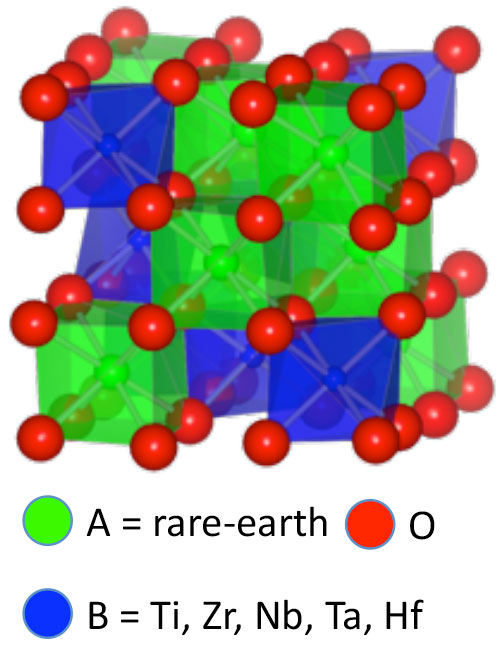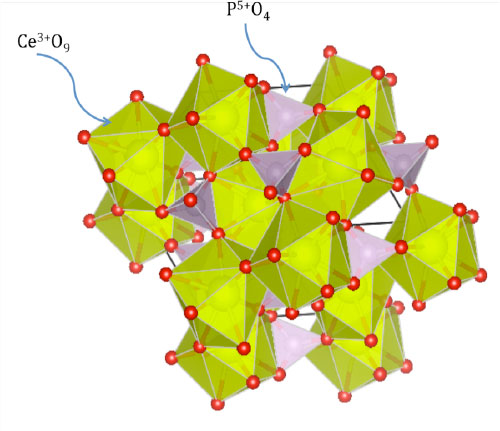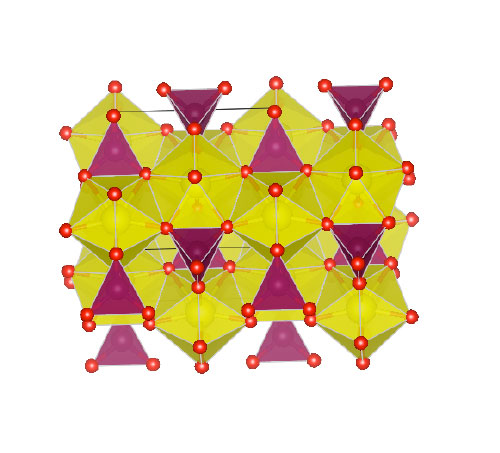Owing to the variety of systems studied by the Grosvenor group, and the large number of tools used to investigate them, a large number of projects are available for graduate and undergraduate students to work on which can focus on synthesis, X-ray spectroscopy, surface analysis or a combination of these.
The long-term goal of this research program is the investigation and development of ordered compounds that sequester actinide elements in the structure. To this end, it is important to examine model compounds as host materials in order to gain a clear understanding of the relationship between crystal structure, composition, bonding, electronic structure, and surface reactivity to the sequestration of actinides such as U. The materials being studied by the Grosvenor group have been chosen because the structures are common in nature and all contain sites large enough, and with a high enough coordination number, to contain actinide elements. All materials synthesized are studied by a combination of X-ray diffraction (XRD), X-ray photoelectron spectroscopy (XPS), X-ray absorption near-edge spectroscopy (XANES), and extended X-ray absorption fine structure (EXAFS).
Examples of current research projects
An Examination of the electronic structure and structural stability of Pyrochlore- and Zirconolite-type oxides

Of the systems being examined for use in nuclear waste sequestration applications, the pyrochlore and zirconlolite phases have been studied the most. Materials adopting either the zirconlite (A2B2O7; A = Ca, V, Zr, Ti; B = Ti, Nb, Ta, Zr, Hf; X/X' = O, F, OH) or pyrochlore ( A2B2X6X' ; A = Ca, Mn, Fe, rare-earths (RE), Gd; B = Ti, Nb, Ta, Zr, Hf; X/X' = O, F, OH) structure can have a variety of chemical compositions. Along with being able to incorporate actinides and being examined for possible sequestration applications, these materials have also been studied for their catalytic and magnetic properties. The focus of these studies is the investigation of Hf, Zr, and Ti containing systems by XANES and XPS owing to the suitability of these materials for sequestration applications (e.g., Gd2Ti2-xSnxO7, Yb2Ti2-yFeyO7-x, RE2ZryTi2-yO7). The use of X-ray spectroscopy has allowed us to understand how the electronic structure of these materials varies depending on composition. The strucuture of a material must be stable upon decay of incorporated radioactive elements to make it an appropriate material for nuclear waste sequestration. To test this, the surfaces of materials are implanted using ion beams of different energies. Glancing angle XANES is being used to investigate how the structure of a material responds to ion implantation.
See here for a recent presentation on our work on pyrochlore-type oxides.
A XANES examination of the stability of the crystal structure of monozite and xenotime rare-earth phosphates after implantation by heavy ions

Monazite ( CePO4 ) is a rare-earth phosphate mineral that has been studied for nuclear waste sequestration applications because of its chemical durability; the ability of actinide elements to substitute for Ce in the structure; and ability of the structure to remain crystalline for long periods of time even when substituted actinide elements undergo radioactive decay. The monazite structure contains 9-coordinate Ce and 4-coordinate P. Many light rare-earth elements can be substituted for Ce in the structure while As and V can substitute for P.

In the related xenotime ( YPO4 ) structure (equivalent to the zircon structure), rare-earth elements are present in an 8-coordinate site. In monazite, the REO9 and PO4 polyhedra are all edge-sharing while in xenotime, the REO8 and PO4 polyhedra are edge and corner-sharing. Members of the Grosvenor group are investigating the electronic structure of these materials, and the ability of these materials to resist radiation-induced structural damage depending on structure and composition.
Understanding materials using X-ray spectroscopy
The primary goal of our research program is the development of materials for nuclear waste sequestration; however, understanding the properties of materials, in general, is also important. X-ray spectroscopy, particularly XANES, is an appropriate technique for developing this knowledge. As such, the research group has conducted a number of studies to understand the properties of materials using X-ray spectroscopy. Two examples of these investigations are found below.
See here for a recent presentation on our investigation of how the electronic structure of the Cu2FeSn3-xTixS8 spin cross-over materials changes depending on composition and temperature.
See here for a recent presentation on our investigation of how the local structural environment in Al1-xGaxFeO3 changes depending on composition and the synthetic method used to make the material.
Available 483.6 research projects
Please contact Dr. Grosvenor regarding possible 483.6 projects for 2020/2021

